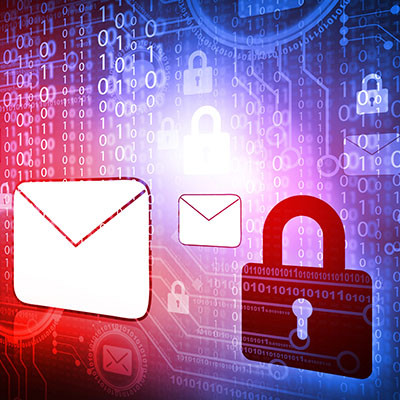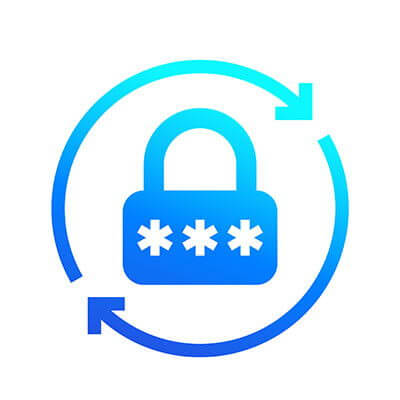Apple rarely sends out alerts about threats, and that is because threats that target Apple devices are somewhat rare in the first place. However, on April 10, 2024, Apple saw fit to send one to certain users in 92 nations by email. These notifications were “designed to inform and assist users who may have been individually targeted by mercenary spyware attacks.” What does this mean, exactly?
Computerware Blog
In today’s world of perpetual security breaches and cyberattacks, it’s no surprise that the greatest response to such threats is to actively prevent them from harming your organization in the first place. One key tool in this effort is an endpoint detection and response (EDR) solution. With endpoint protection on your business’ side, you can leverage a robust and powerful security solution to handle a significant portion of your network security.
How clearly outlined are your IT-related policies and procedures in the workplace? It is difficult at best to manage these expectations alongside your employees, but it’s a necessary task all the same. Today, we want to help your organization walk the fine line between protecting your assets, data, and reputation, and granting your employees permissions to do what they must on your network infrastructure.
Encryption is a powerful tool that any business can use to beef up its security infrastructure. While it’s often discussed in the context of virtual private networks, it’s also a key component in keeping any email solution secure. Why is encryption such a valuable security measure for email, and why is it considered non-negotiable for businesses of all kinds? Let’s take a closer look.
When you ask a managed service provider or other technology expert when you should be upgrading your technology, you’ll likely get a pretty nebulous answer like, “it depends.” That’s because there isn’t necessarily a hard or steadfast response to this question, and the answer will change depending on various factors that are inconsistent across businesses.
When it comes to your business’ data backup and disaster recovery, you want to have clear outcomes that you aim for, as well as metrics that help you gauge success. Today, we want to highlight some of the most important metrics associated with data backup and disaster recovery, as well as the importance of testing your systems. Trust us when we say that a solid data backup and disaster recovery strategy is crucial to the success of any business—including yours.
Cyberattacks often attack healthcare organizations, including businesses and vendors they associate with, primarily due to how lucrative they can be. One particularly nasty hack is just one of the many organizations which have been featured in headlines due to their inability to protect against security threats. Let’s explore this new situation with UnitedHealth Group and see if there is anything you can learn from it.
Cybersecurity training can be an overwhelmingly annoying issue for everyone. Unfortunately, it’s a must. Understanding the reasons behind this reluctance can help organizations tailor their training programs to be more engaging and effective. In this month’s newsletters, we go into four common reasons why employees might harbor disdain for cybersecurity training.
Humans have all kinds of stakes in digital security thanks to today’s online world demanding that we be more online than ever. Whether it’s personal information or financial details, you can bet everyone is at risk to some degree. Today, we want to examine why individuals—even technology professionals—are not immune to data theft.
If you’re in the know about cybersecurity and, specifically, mobile malware, you might have heard the name XLoader in the past. The malware has gone through considerable versions and variations, allowing it to steal information from users in more than seven countries, but the most recent is incredibly scary.
Imagine this scenario: amidst your daily routine, an email arrives in your inbox, seemingly from a cybersecurity company. The alarming assertion is that you've become the target of a hacking attack. Despite lacking IT expertise and being unfamiliar with your security agency's procedures, you trust the message and respond promptly. Unbeknownst to you, the email is a shrewdly disguised cyberthreat, ensnaring you in their trap.
A single oversight can potentially nullify the effectiveness of your cybersecurity measures. For instance, even if you've implemented security measures like multifactor authentication, a phishing scam or certain malware variants could grant unauthorized access to your email, compromising all the data stored in your inbox.
Data security is one of those things that you have to stay out in front of. Hackers and scammers are changing tactics and getting a little more sophisticated as time goes on and it creates a pretty difficult situation for most IT administrators. Utilizing multi-factor authentication (MFA), two-factor authentication, or whatever it is called by the application you are using has become a great way to add an extra layer of security to organizational data protection efforts. Today, we will discuss the benefits of this strategy and why it isn’t a be-all, end-all to your overall security.
Data security is an integral part of not just business operations but everyday life at this point. Most people agree that specific measures to protect data security, like verifying emails and updating antivirus software, are reasonable. However, one aspect that many people fail to consider is oversharing information on social media.
The cloud gives businesses more opportunities than ever to change operations for the better, but a poorly configured cloud could create more problems than it solves—including the potential for a security breach! Here are some of the most important reasons why you must configure your cloud solutions properly.
2023 was a banner year for AI (Artificial Intelligence), as it truly entered the zeitgeist in a way that it previously had failed to. Many companies and industries have considered ways to implement AI and make it part of their operations, while others might be fearful of it for its role in job scarcity. However, 2024 might show businesses that they should be worried about AI for a reason you might not have anticipated: AI-generated cyberthreats.
It doesn’t matter who you are; your age, your occupation, your employment status, your station in life—you need to make 2024 the year you get your cybersecurity hygiene in check. What we’re going to talk about today isn’t overkill, overly complicated, or expensive. This isn’t us trying to sell you on something. In fact, this is probably the easiest New Year's Resolution you can give yourself.
First, let me start with a really quick story.
It should come as no surprise that one of the biggest online retail days of the year also incites a lot of scams and threats targeting not just consumers, but online businesses as well. Let’s go over some of the major statistics surrounding online retail scams and what you should know as you navigate the post-holiday chaos.




















